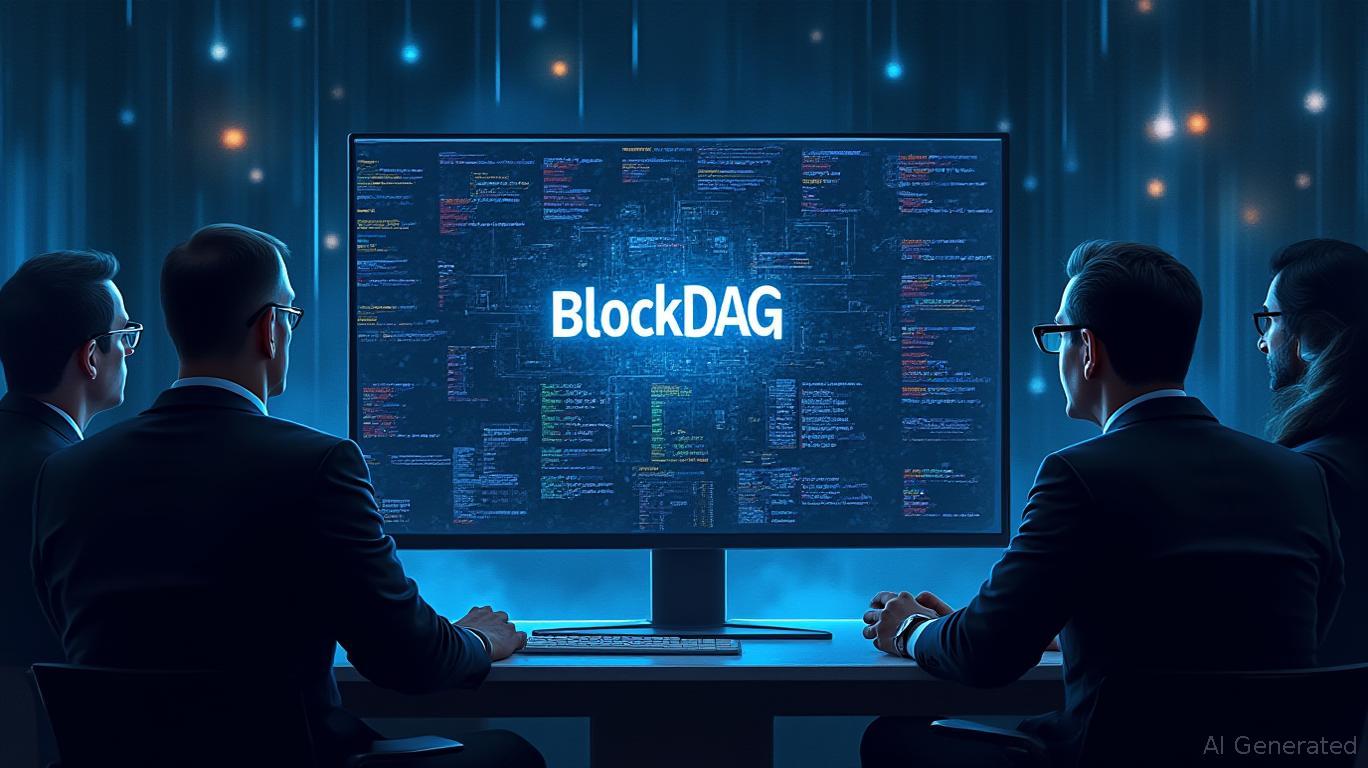Stablecoins: The Foundation for a Decentralized Financial Tomorrow
- Stablecoins are driving DeFi growth, projected to support $2 trillion in tokenized assets by 2028, with $1.5 trillion in tokenized funds and equities expected. - Stripe and Paradigm’s Tempo blockchain, handling 100,000 transactions/second, aims to streamline cross-border payments and integrate on-chain/off-chain systems. - Regulatory challenges around AML compliance and digital dollarization risks persist, but stablecoins are reshaping global finance by reducing costs and expanding inclusion. - Fintechs
The international financial sector is experiencing a major transformation as fintech companies and neobanks push stablecoins to the center of technological progress. With decentralized finance (DeFi) anticipated to reach $2 trillion in tokenized assets by 2028, stablecoins—digital currencies tied to assets like the U.S. dollar—are becoming essential for cross-border transactions, lending, and remittance services, as highlighted in a

One of the main drivers is the increasing embrace of stablecoins by institutional players, supported by clearer regulations in the U.S. and enhanced market liquidity.
The partnership between Stripe and Paradigm to introduce Tempo—a blockchain tailored for stablecoins and payments—demonstrates the sector’s accelerating pace. Tempo is engineered to process up to 100,000 transactions per second at minimal cost, utilizing Stripe’s extensive experience in payments to connect blockchain and traditional financial systems. The platform, currently being piloted with partners such as
Nevertheless, obstacles persist. Regulatory oversight—especially concerning monetary independence and anti-money laundering (AML) measures—continues to challenge the scalability of stablecoin networks, according to
The blend of fintech innovation and DeFi’s programmable capabilities is reshaping the world of finance. As projects like Stripe’s Tempo and others advance, stablecoins are poised to serve as the backbone of a more decentralized and streamlined financial ecosystem—pressuring traditional banks to adapt or risk being left behind.
Disclaimer: The content of this article solely reflects the author's opinion and does not represent the platform in any capacity. This article is not intended to serve as a reference for making investment decisions.
You may also like
EU Aims for Coordinated Financial Regulation Amid Resistance from Member States
- EU proposes centralized financial oversight via ESMA, mirroring the U.S. SEC model to unify stock and crypto market regulation across 27 nations. - Aims to reduce regulatory fragmentation, lower cross-border compliance costs, and strengthen Europe’s competitiveness against U.S. financial markets. - France and others oppose "passporting" rules under MiCA, fearing regulatory arbitrage, while ESMA seeks expanded authority to enforce consistent crypto rules. - Draft legislation expected by December faces res

Hyperliquid News Today: BlockDAG's Analytical Safeguards: Will Support from Institutions Ease Concerns Over Openness?
- BlockDAG defends transparency claims with $435M presale data, 312K holders, and institutional backing. - CEO Antony Turner highlights 1,400 TPS testnet, F1 team partnerships, and $86M allocated institutional investments. - 20K miners and 3.5M testnet users demonstrate organic growth, contrasting speculative rivals like Hyperliquid. - Leaked exchange listing rumors with Coinbase/Kraken suggest potential mainstream adoption, pending presale completion.

Crypto’s Drive for Innovation and the Need for Investor Safeguards: Lessons Highlighted by a Tragic Prison Incident
- Faruk Ozer, founder of collapsed Turkish crypto exchange Thodex, was found dead in prison on Nov 1, 2025, while serving a 11,196-year sentence for a $2.6B fraud. - Authorities suspect suicide; his death reignited debates over Turkey's solitary confinement practices at Tekirdag F-Type prison, criticized by human rights groups. - The 2021 Thodex collapse left 400,000 users stranded, prompting Turkey to implement stricter crypto regulations despite remaining a $200B regional crypto market. - Ozer's case mir

Bitcoin News Today: Bitcoin's 405k BTC Liquidation: Is the Market Finding Balance or Facing an Imminent Collapse?
- Bitcoin HODLers sold 405,000 BTC in 30 days, the largest drawdown since July 2025, as spot trading volume surged to $300B in October 2025. - Analysts debate if this reflects market stabilization or prelude to further capitulation, with Binance dominating 58% of spot trading volume. - Long-term holders offloaded 325,600 BTC while short-term holders face average losses, raising concerns about sustained distribution phases. - Miner reserves stabilized near $115,000 price level, but risks persist below $110,
